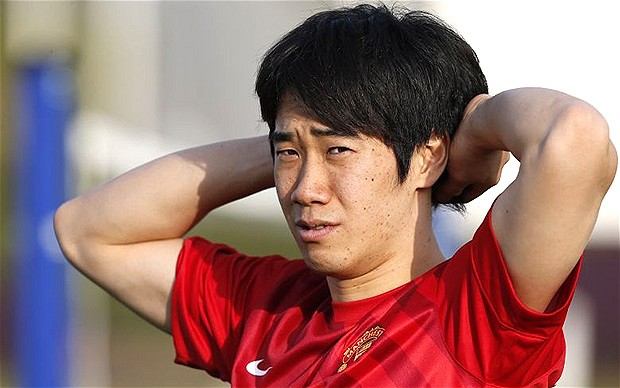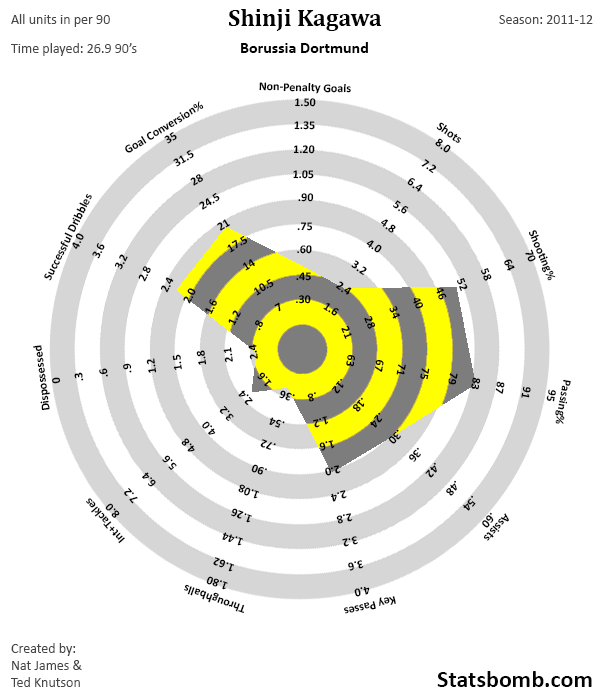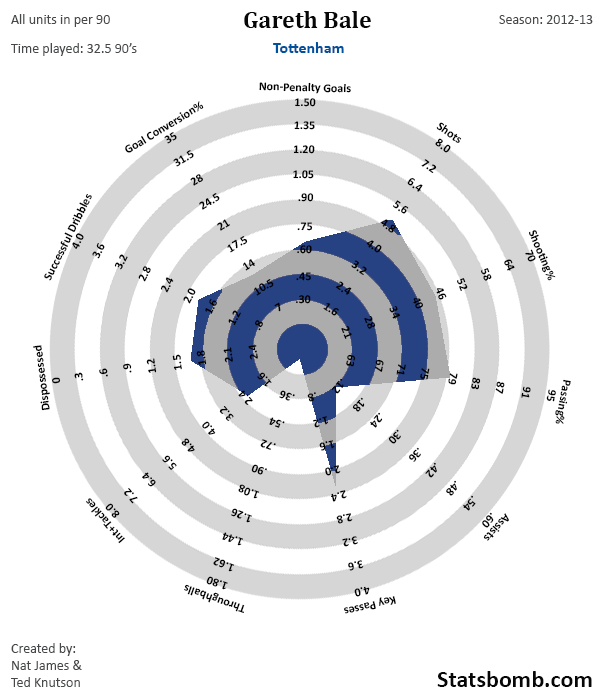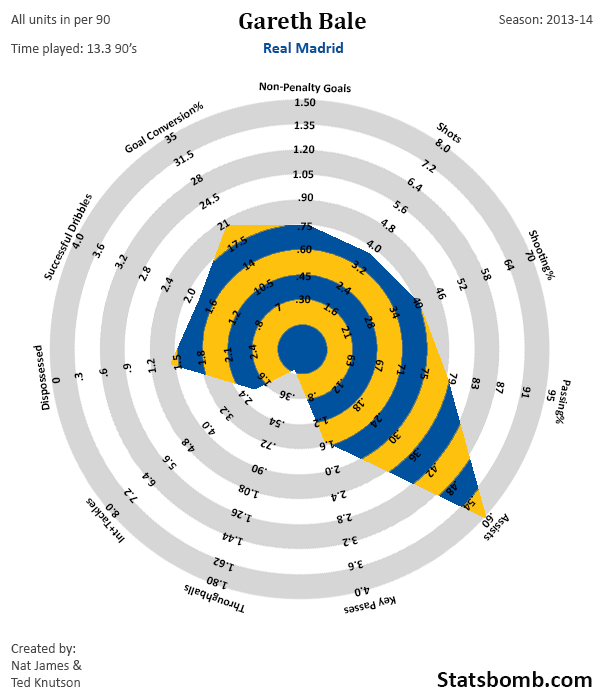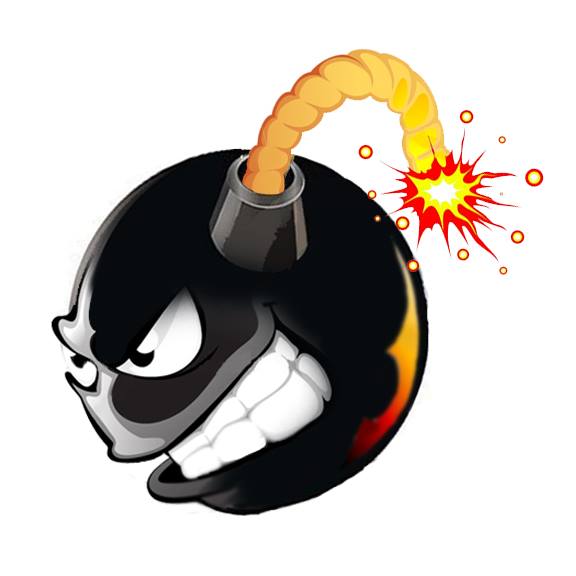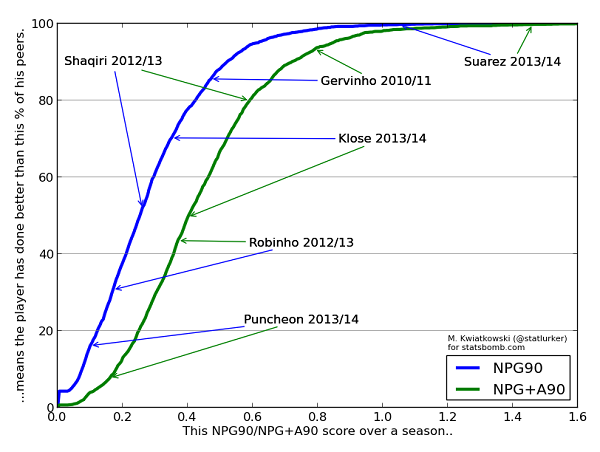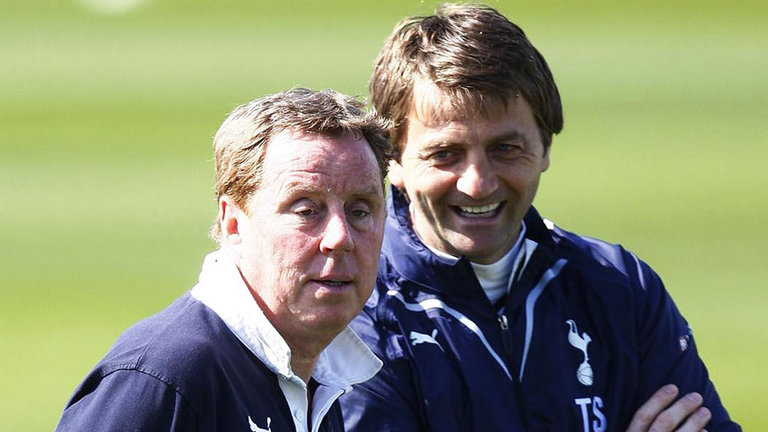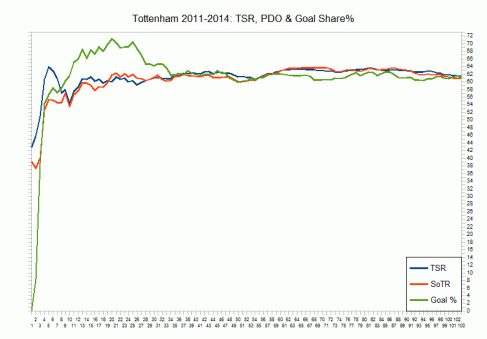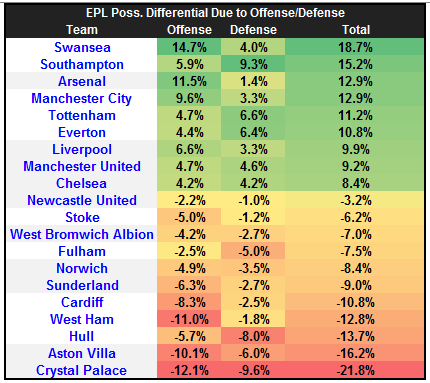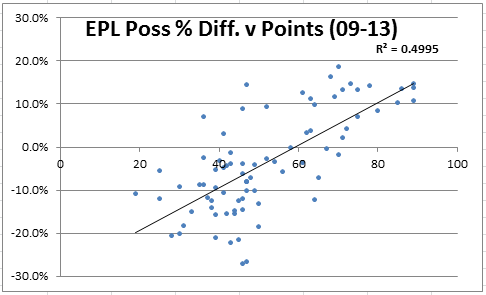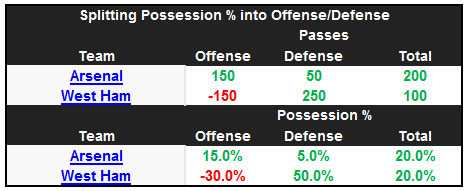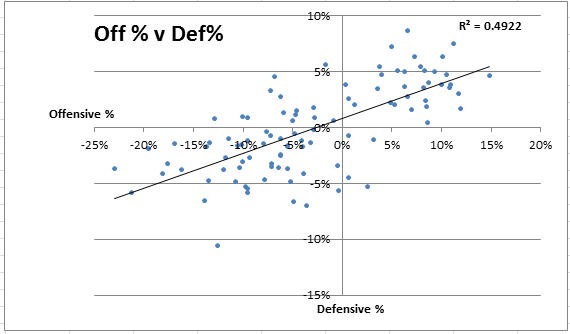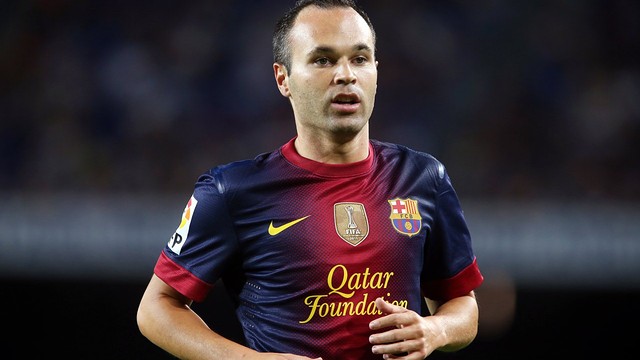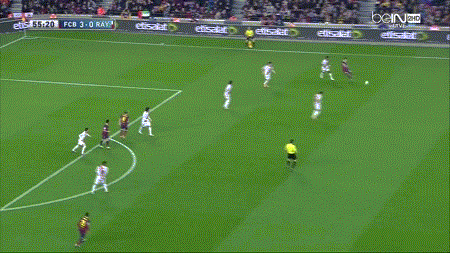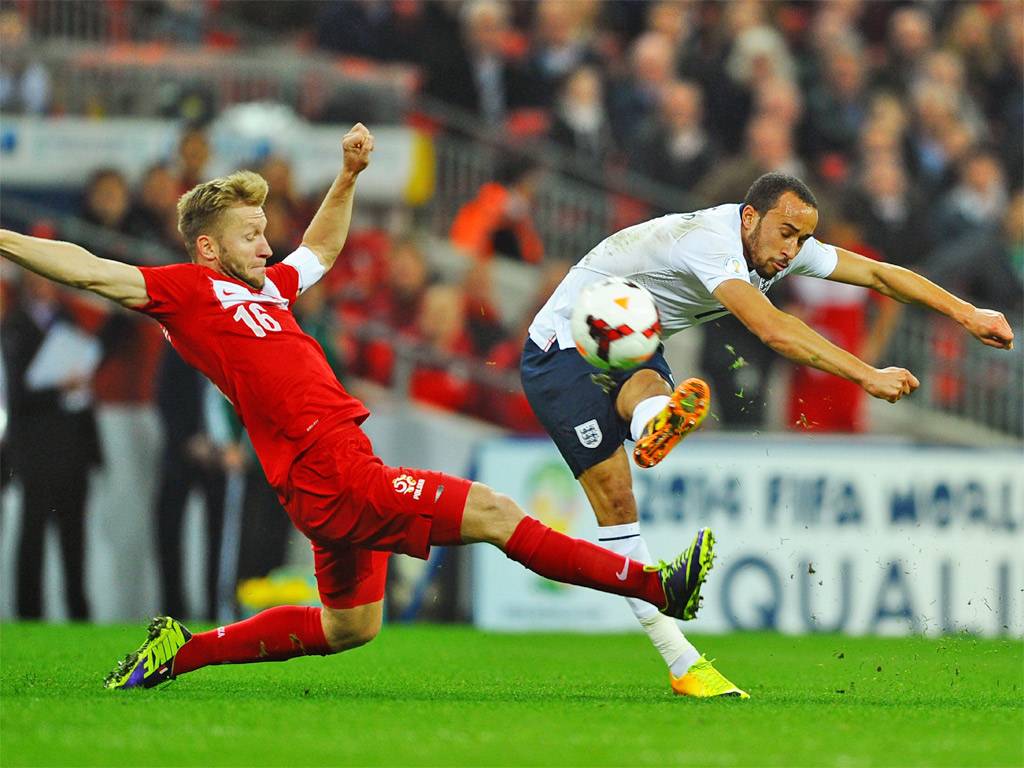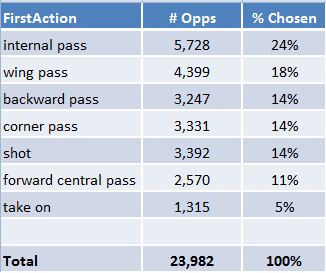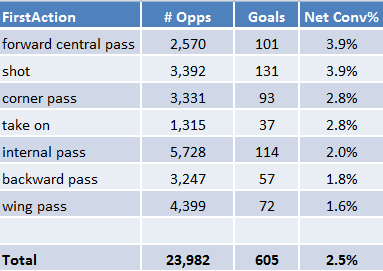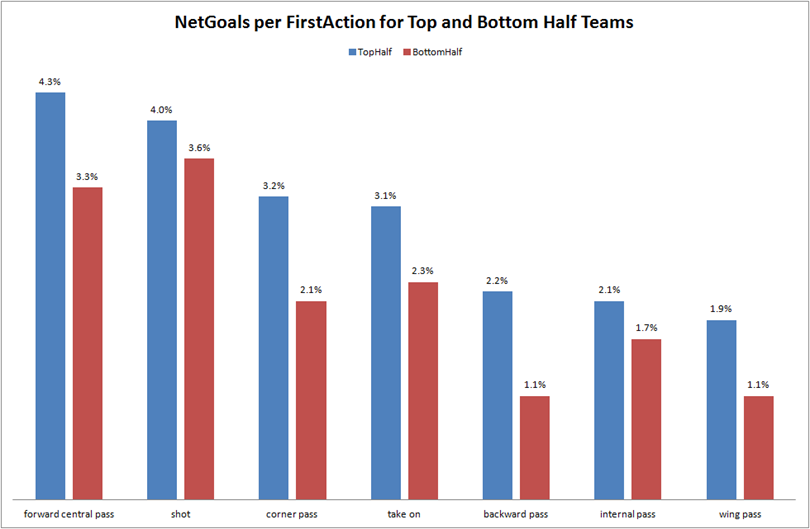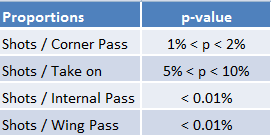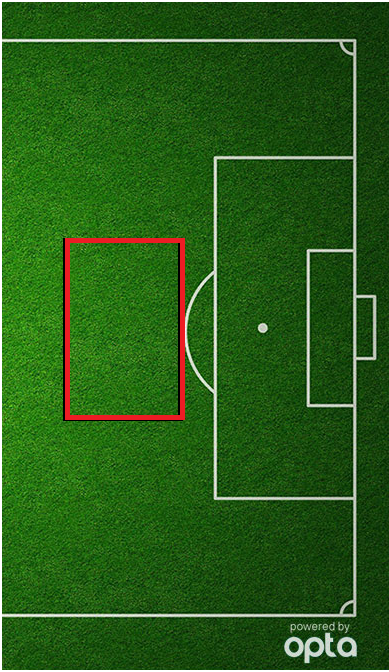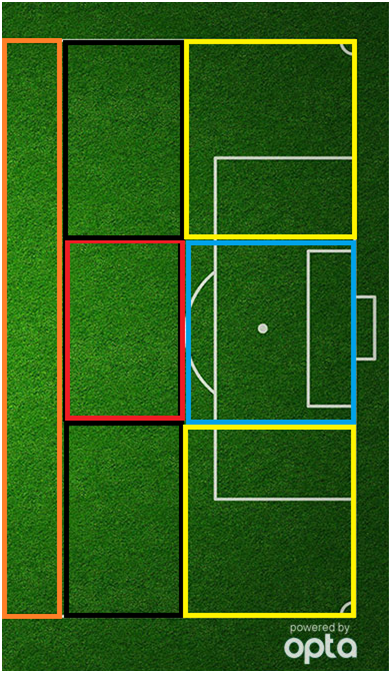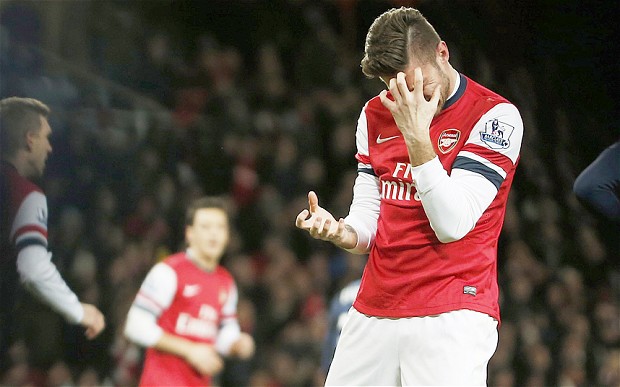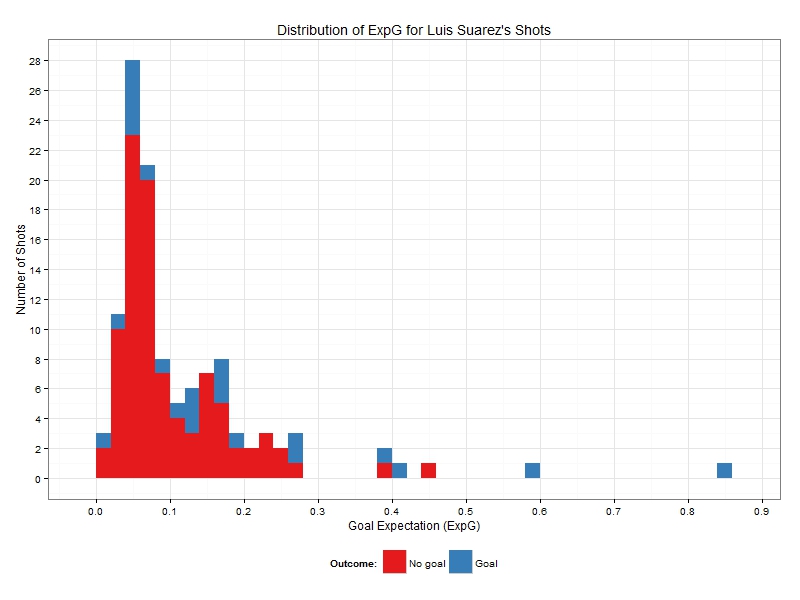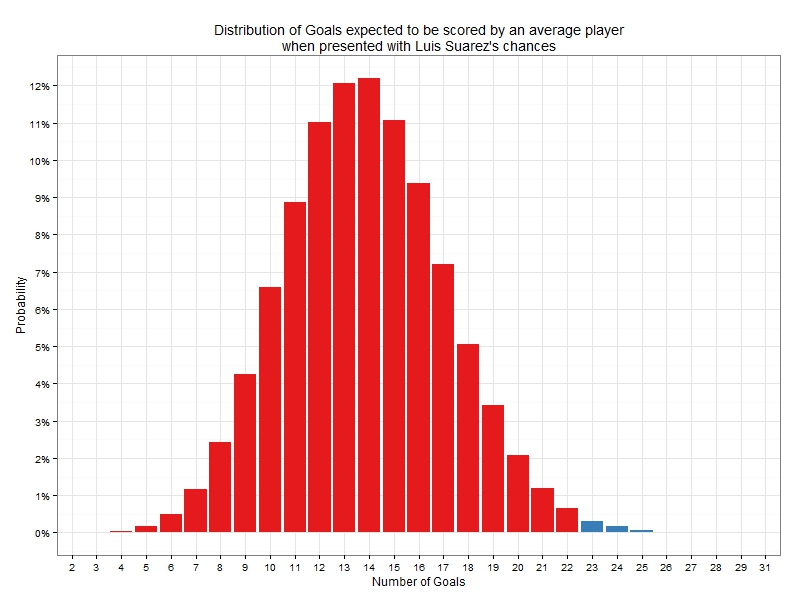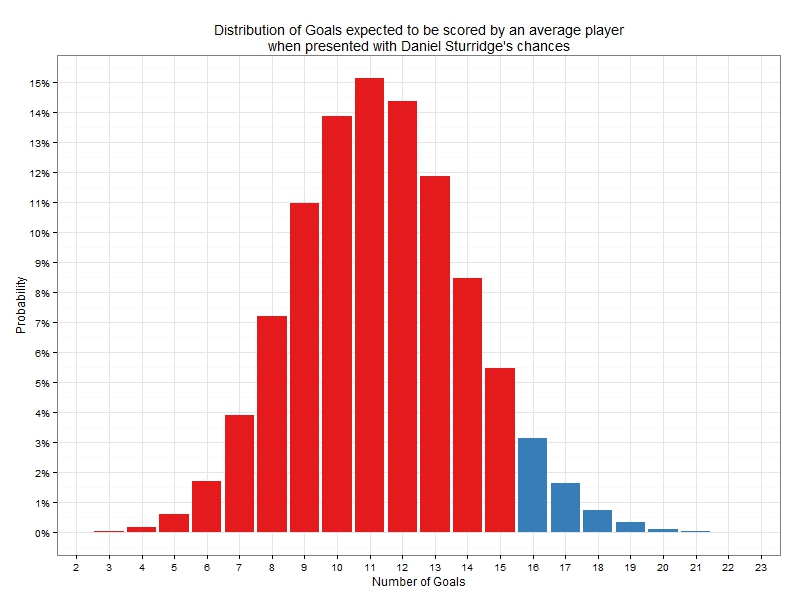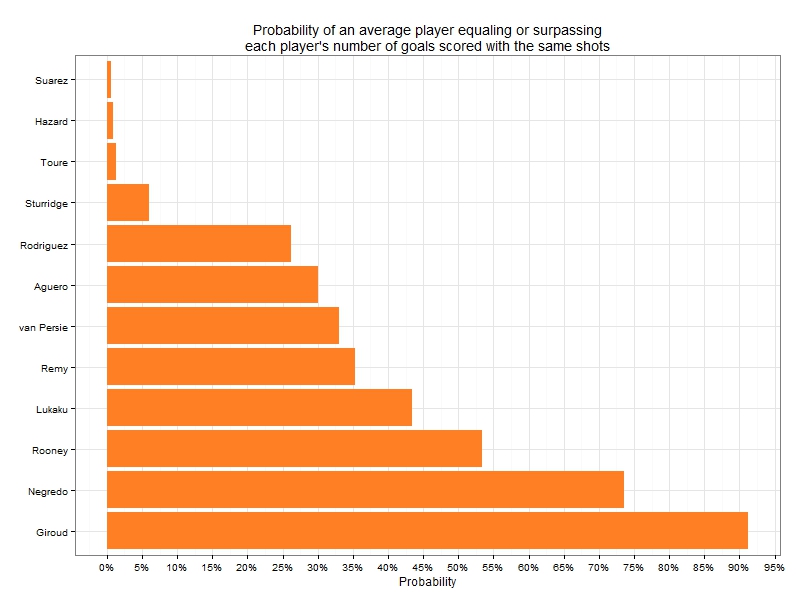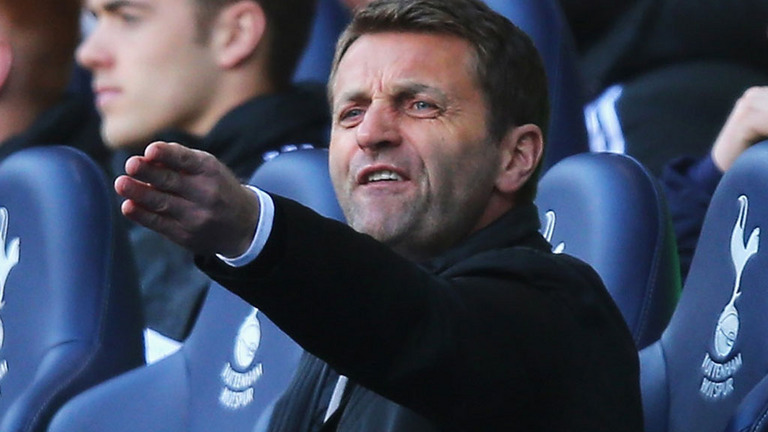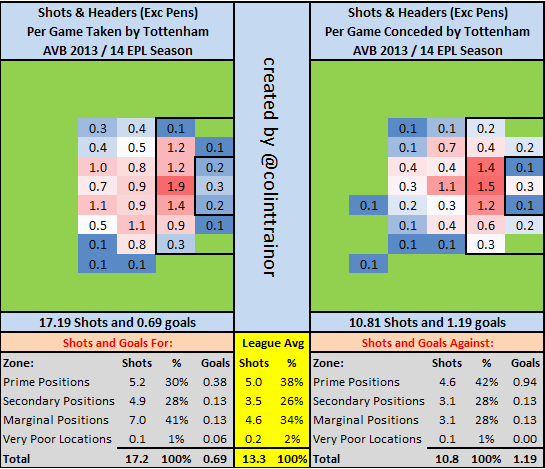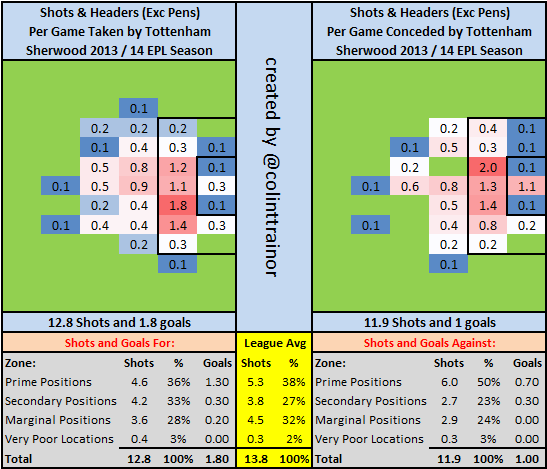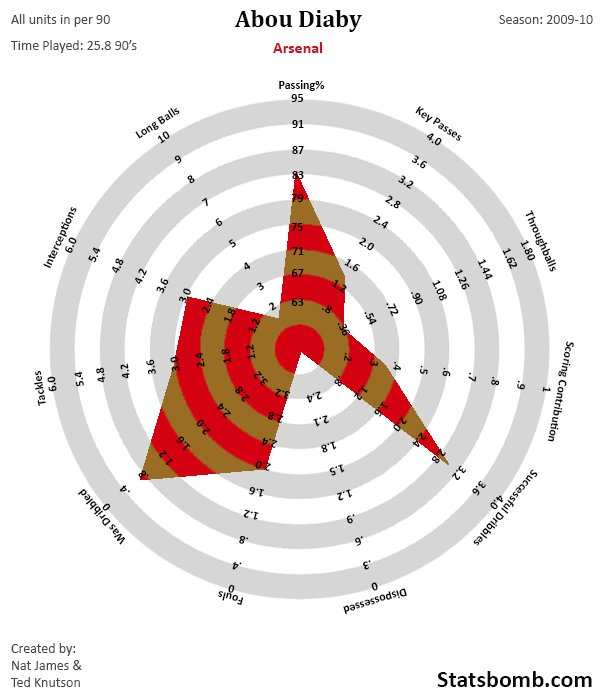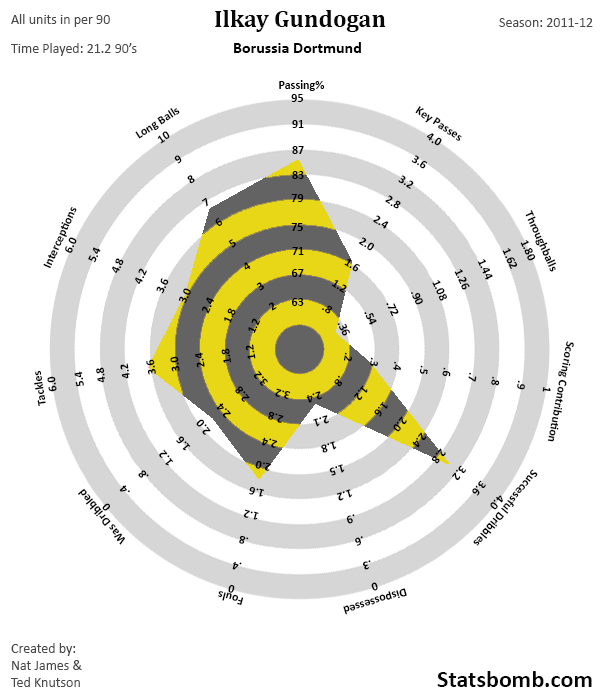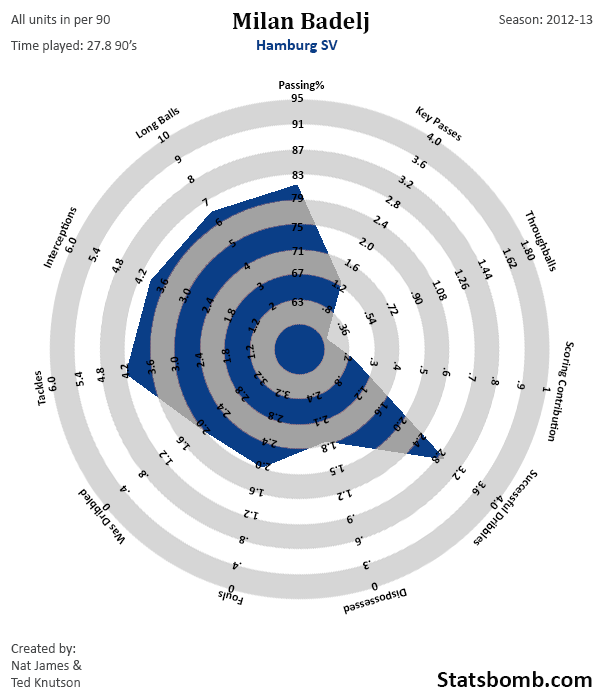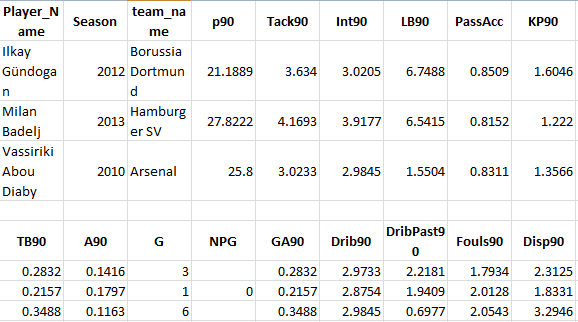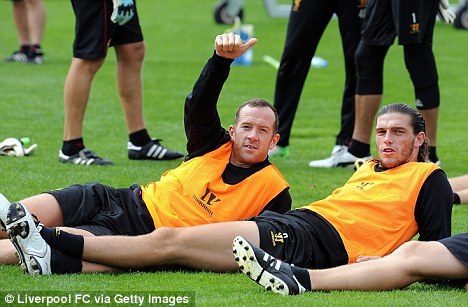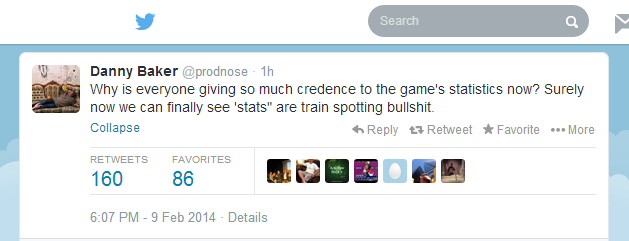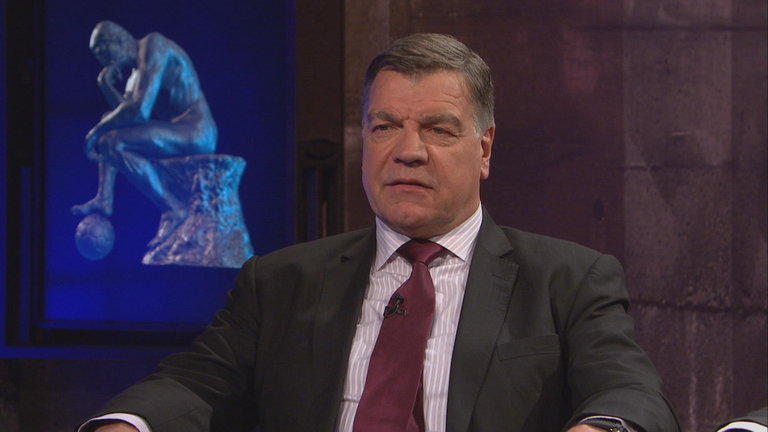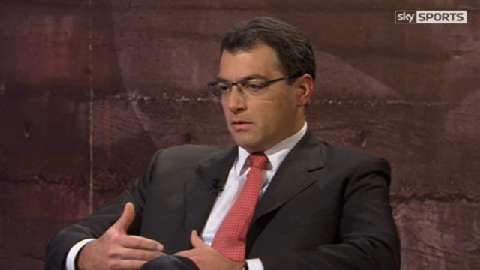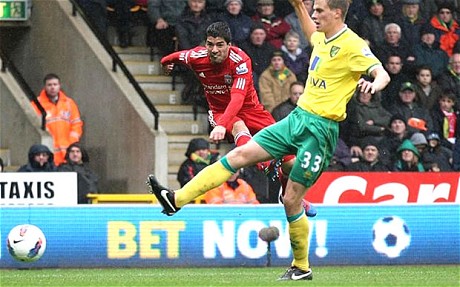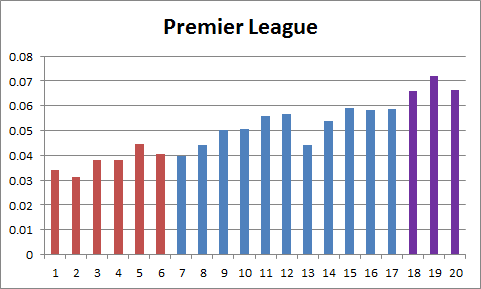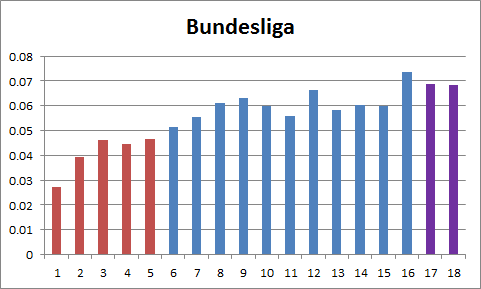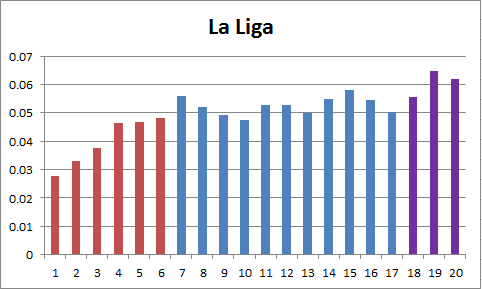I get a lot of requests for radars of specific players and or years. Apparently the radars are popular, which is great, but I don’t actually have enough time to keep up. This one, however, I have wanted to do for a long time, so here we go.
If this were an art installation, it would be a painful, heart-wrenching piece called “What Have You Done To My Kagawa?!?”
If it were a parody twitter account, it would be vaguely funny, but as racist a portrayal of Asian stereotypes as Mickey Rooney in Breakfast at Tiffany’s. (Seriously, don’t follow EvilKagawa.)
My short answer on why Kagawa looks so much worse than he did at Dortmund is: User Error.
Moyes doesn’t know how to deploy him to get the best out of him, and make no mistake, Kagawa’s best is very very good. He’s one of the best pressing attackers you will find, and he’s one of those guys that creates with his dribbling, passing, and goals. Those things are incredibly valuable, and Moyes has no idea what to do with Japan's best player .
This is one area where I end up having a ton of sympathy for football players. First, you move to a huge club with a genius manager, in the most popular football league in the world. Exciting, right?
That genius manager uses you a bit differently than you are used to, but your stats still look okay. Then said manager retires and the new guy, who clearly is not as good as the old guy, thinks you’re basically useless. This is despite the fact that your two most recent bosses - who were unequivocally brilliant - found your work tremendously valuable.
If this was a normal job, you just leave. Since it’s football and you have a contract, you’re stuck until your agent can negotiate an escape, but in the meantime this new donkey is fucking up the program. He’s screwing up your career path, your chance to make the World Cup team, and generally making your life miserable. Sure, you’re still getting paid well, but there is an awful lot more to life and happiness than getting paid.
I hope he moves this summer. Kagawa is an outstanding player. He deserves a manager who understands his game well enough to let the rest of the world see that’s true.
1. I'm not really sure whether it is suitable for this mailbag column, but I was wondering what you think of the Europa League in general, because I never ever hear you about it.
2. What should Chelsea do with Thibaut Courtois? He probably is one of the best goalkeepers in the world at the moment, but if you take him back at Chelsea you have to ditch Cech or will he be loaned to Atletico for another season?
--Simon
To answer your first question, I’m off on Thursdays, and use that day to take a break from football and pretend I have some sort of social life. Even if Arsenal were playing in the EL, I would not end up watching it, so that’s why I also never talk about it.
The question about Courtois is interesting, especially since I get the feeling he’s ready to jump ship if that situation doesn’t get resolved soon. For those who don’t follow much football outside of England, Courtois is definitely one of the top 5 goalkeepers in Europe right now, despite only being 21. Chelsea own him, but he’s been on loan at Atletico Madrid the last two seasons, and has been a crucial part of their resurgence under Simeone.
On the other side of this issue is Petr Cech, Chelsea’s stalwart goalie who himself is only 31 (middle aged for a GK), and who hasn’t exactly been a slouch. He’s probably capable of another five seasons of top play.
Objectively, it’s a great problem for a team to have, but neither guy is willing to play second fiddle. The question then becomes fairly simple. Which guy is the best player? I personally would go with Courtois. He’s young, but has proven himself at the Champions League level, and is likely to be around for a very long time. That said, Mourinho is often loyal to his best players, and he and Cech have a long history of good results together.
If I were trying to make this decision, I’d have a public skills contest broadcast on Sky like every night for a week. You’d record the footage of the battle/practice matches, and then you’d also have some goalkeeping greats commenting over the top of the footage and grading what they see and explaining why it’s important.
Screw Being Liverpool - tell me you wouldn’t watch this!
The only issue for Chelsea is that if they do choose to bring Courtois home, they will have to find a buyer for Cech if he doesn’t want to play backup. Again, a good problem to have, but not one without potential pitfalls.
Is there a good way to statistically measure the effect of being in a good/bad team on a player's performance? For example, Bale's numbers at RM this season are outstanding, how much of this improvement is due to him getting better vs being surrounded by better players? I get the impression that it's generally accepted that say, 10g/10a at a team that gets relegated is a lot more impressive than at a team that wins the title, but has anyone attempted to quantify HOW much more impressive it is?
- Martin (@Mush_27)
Excellent question, and the answer is that work here is ongoing. The top performers every season in the NPG90 metric also tend to come from the very top teams in Europe, of which there actually are not that many. There’s a hefty selection bias involved (the best players tend to move to the teams with the most money), but enough footballers in Europe that you would expect at least some unusual names to crop up each year.
Gareth Bale is an excellent test case, because instead of being surrounded by a bunch of slightly above average players like he was at Spurs, he’s now surrounded by the world’s best and the shooting rates for his teams are very similar. It’s hard to design a better real world experiment than this.
Here is Bale’s radar last season at Spurs.
And here is this year’s Madrid radar.
Now obviously, the analysis isn’t that straightforward. For one, Bale has only played as a forward for the last three seasons of his career – he was originally a left back (and a very good one). Also, Bale is now 24, which means he’s just entering his prime as an attacker – we’d expect him to improve this year and maybe next as well.
That said, this is one helluva leap in production, fuelled largely by the boost in conversion rates for himself and his teammates, which is likely the result of playing on a better team. His key passes per game actually went down, but he's currently breaking the boundary in assists per90 at .68. Helloooooo differences in defensive pressure.
Your question about good performers on smaller teams is tougher to answer. Sometimes you see standout performers on those teams because of talent, and other times you get it because they seem to monopolize the ball (see also: Diamanti). This is one reason why it would be beneficial for us to develop some sort of usage rate in football, and use it to normalize offensive output for comparison.
I also think people like Daniel Altman are looking at the performance value versus overall team quality question from a number of different angles, and will likely publish more on it in the near future. Baby steps.
Some questions about de Eredivisie; what does the model thins about Ajax now. still doesn't like em? They have been not good after the winter break imo, but they did take most of the points.
And what about the relegation race, so many teams still not safe. I know your model really hated RKC all season, but they keep picking up points here and there.. Any thoughts now?
Cheers,
John van Herk
(Note: This question was asked a couple of weeks ago)
Ajax are pretty interesting because much like Liverpool in the Premier League, they have progressed well all season. The model currently has them as the second best team in the Eredivisie behind Twente, but because Twente keep dropping points, Ajax are now the most likely to win the league (by a small margin, anyway). This is the first season I’ve had access to Eredivisie data, so I’m still learning a lot about how the league operates. More info leads to tweaking leads to better predictions down the road.
Regarding relegation, the model still hates Waalwik and still thinks they are the worst team in the league, though they are not as bad as they were in the first half of the season. (To be fair, it would be difficult for them to stay that bad for a full year.) Roda are also most likely to remain in the bottom three, and my model really dislikes Utrecht, though that seems to be in dispute with opinions from other modelers and Eredivisie fans alike. [I have two beer bets made much earlier in the season that they will finish lower than 12th.]
I think Nijmegen could still climb to safety, but it kind of depends on them playing defense from time to time, which is practically a unicorn for the bottom half of the Dutch league. 38% shots on target average across the league. What the actual fuck?
My question deals with Arteta. You mentioned a few weeks ago how he comes up in looking at deep lying playmakers and defensive midfielders. I'd like you to expound upon that, specifically how he rates defensively. He seems to get a lot of criticism for that (unfairly in my opinion).
Thanks and keep up the good work, Tripp
Looking at the stats (which probably don’t tell you the whole story, but certainly convey a lot of it), Arteta is excellent defensively. He’s also an excellent passer, both when he was an attacking midfielder earlier in his career, and now when he acts as a destroyer and ball recycler for Arsenal. For the past three seasons, Arteta has probably been the best combination of passer and defensive midfielder in the league. Yes, better than Carrick, and just about every other PL DM I can think of.
He was so good in 2011-12 that when he was injured, Arsenal absolutely could not function without him. Some of that dependence has waned, but he’s still probably their number one option at that position in midfield. The worry I have is that he turns 32 next month, and plays a physical position that often gets injured. Arsenal need to make sure they have reliable cover going forward and an eventual succession plan in the next year or two.
Since 2005, Jose Mourinho coached teams have been making a mockery of football’s current possession based stats – namely, time in possession.
Even the “And Back to the Studio” crowd has sobered up from their collective Barcelona Bender and started to realize that time in possession is a stylistic choice, not necessarily a route to winning games. Unfortunately, this has led to a new, insipid trope of citing possession stats just because they’re there.
The number of possessions stat in basketball has formed the basis for the genuinely useful offensive and defensive efficiency ratings and even the incoming ‘databall’ revolution. Do you think it’s possible to develop a similar stat for football, and if so, how would you go about doing it?
MO, Los Angeles
In addition to the “Mou skew” you currently have Simeone’s Atletico team, and earlier versions of Borussia Dortmund where Klopp’s teams rarely dominated possession, they simply dominated the scoreboard.
Alex Olshansky has probably done the most work on different ways of looking at possession so far, including from this article earlier in the week. Mike Goodman’s work on MiPMoP is also an interesting take on possession value and how teams use it.
In a similar vein, I’ve worked on shot pace a couple of times, helping to quantify how quickly teams move the ball up and down the pitch during their matches. It would likely be preferable to look at final third entries for and against instead of shots, but sadly that data isn’t publicly available at the moment.
So to answer your question, there are a number of people casually working on this, and normalizing possession and attacking rates is fairly important, but there are other issues that are probably more interesting and more valuable at this time. We’ll get there.
And that, my friends, is all I have time for. We now have enough followers that I can gather new questions at least once every month, so I’ll start shooting a mailbag at least that often from here out. If you have questions before I ask, it’s best to just shoot me an email at my twitter account name, Gmail, and I’ll file them away for later use. Twitter seems to be losing hashtags, which means I lose everything that comes at me there immediately.
Cheers,
--TK
